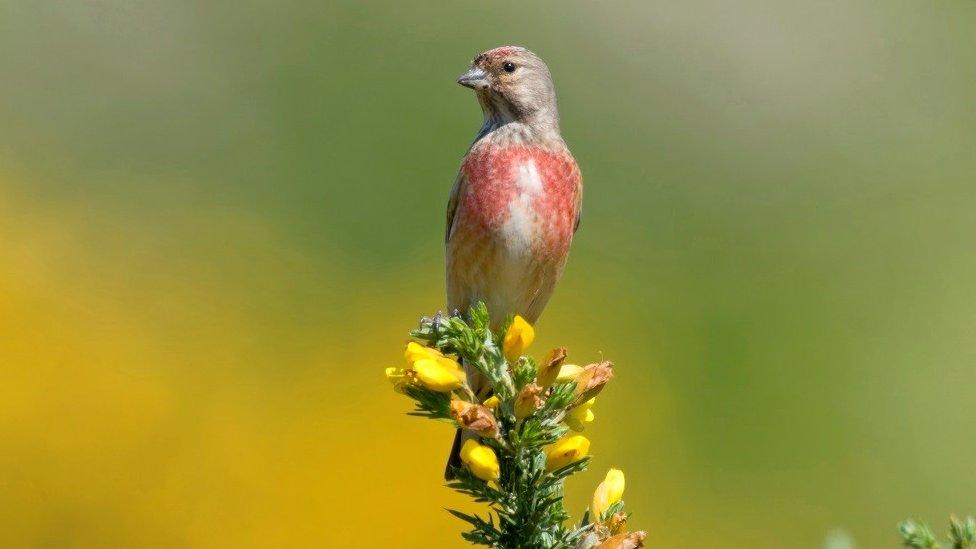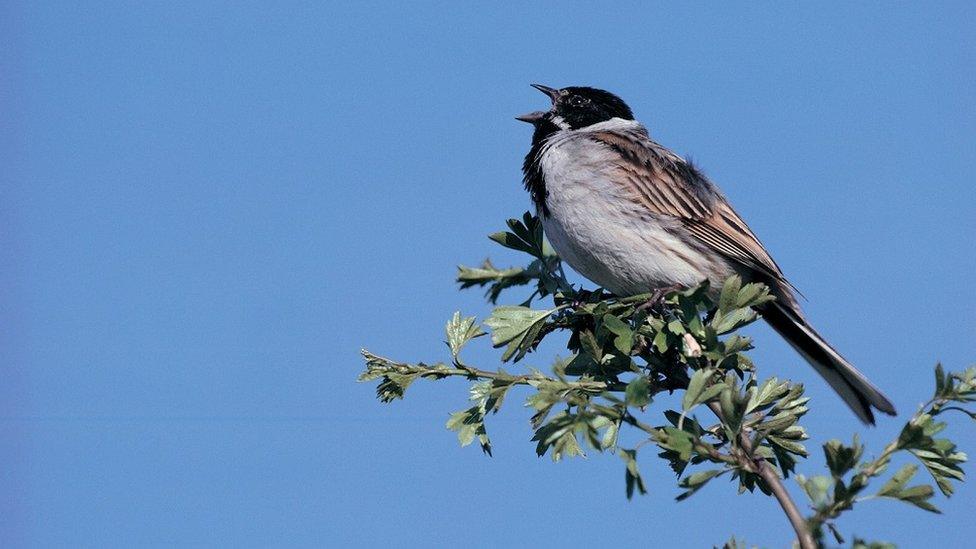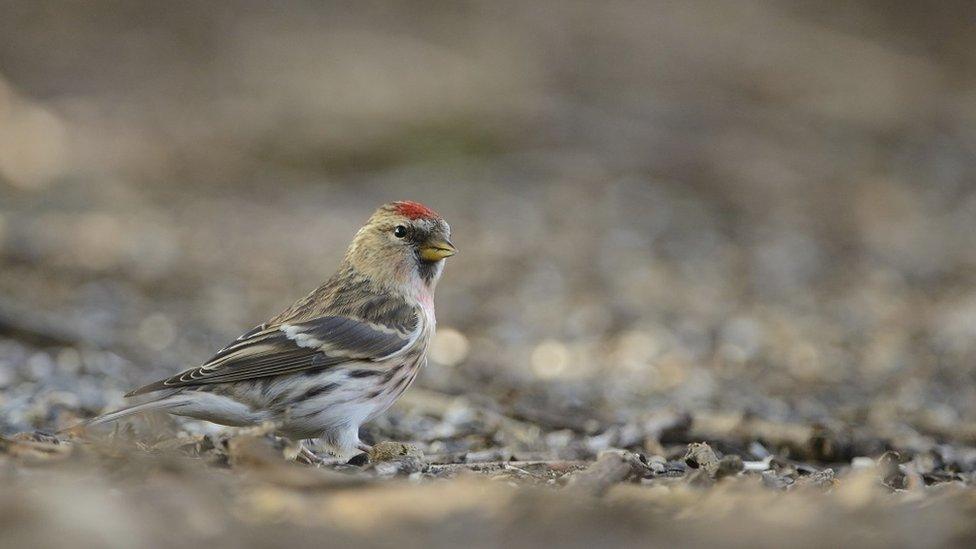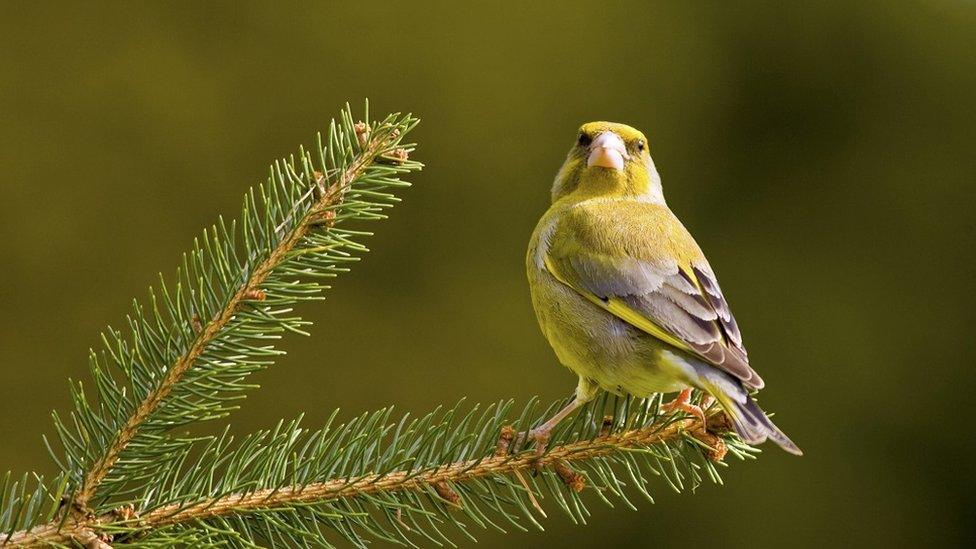Some seed eating birds in decline in Northern Ireland
- Published

Experts say lower numbers of linnets are down to a continued reduction of our small arable sector
Some seed eating birds have been in decline in NI over the past decade, according to a report published on Thursday.
Experts put lower numbers of linnets and reed buntings down to a continued reduction of our small arable sector, which provides food.
By contrast, their numbers are increasing in other parts of the UK.
Greenfinches, a once common sight, are under major pressure from an incurable disease they pick up from wood pigeons.
Their numbers are down 82% in recent decades.
Overwintering geese and diving ducks, especially at Lough Neagh, are also in decline.
That has been blamed on changes in migratory patterns, but also a reduction in the available food for them there.

Reed bunting
It is not all bad news, with garden birds like blackcaps, collared doves and goldfinches on the increase.
And migratory whooper swans are also said to have maintained a "long-term increase".
The State of UK's Birds 2020 report combines the latest results of bird surveys and monitoring studies.

A Lesser redpoll
Less is known about the numbers in Northern Ireland because not as much surveying goes on.
"We are indebted to the volunteers who collect the valuable data that made this report possible'" said the RSPB's Anne Marie McDevitt.
"However, we need an even larger and stronger network of bird survey volunteers across Northern Ireland to allow better monitoring of those less common species, and identification of problems before it is too late," she added.

Greenfinches, a once common sight, are under major pressure from an incurable disease they pick up from woodpigeons
For the UK as a whole woodland birds are found to have declined by 27% since the early 1970s.
There has been an overall drop of native breeding birds with 19 million fewer pairs compared to the late 1960s.
House sparrows have been particularly badly hit. There are 10 million fewer pairs than in the mid sixties.